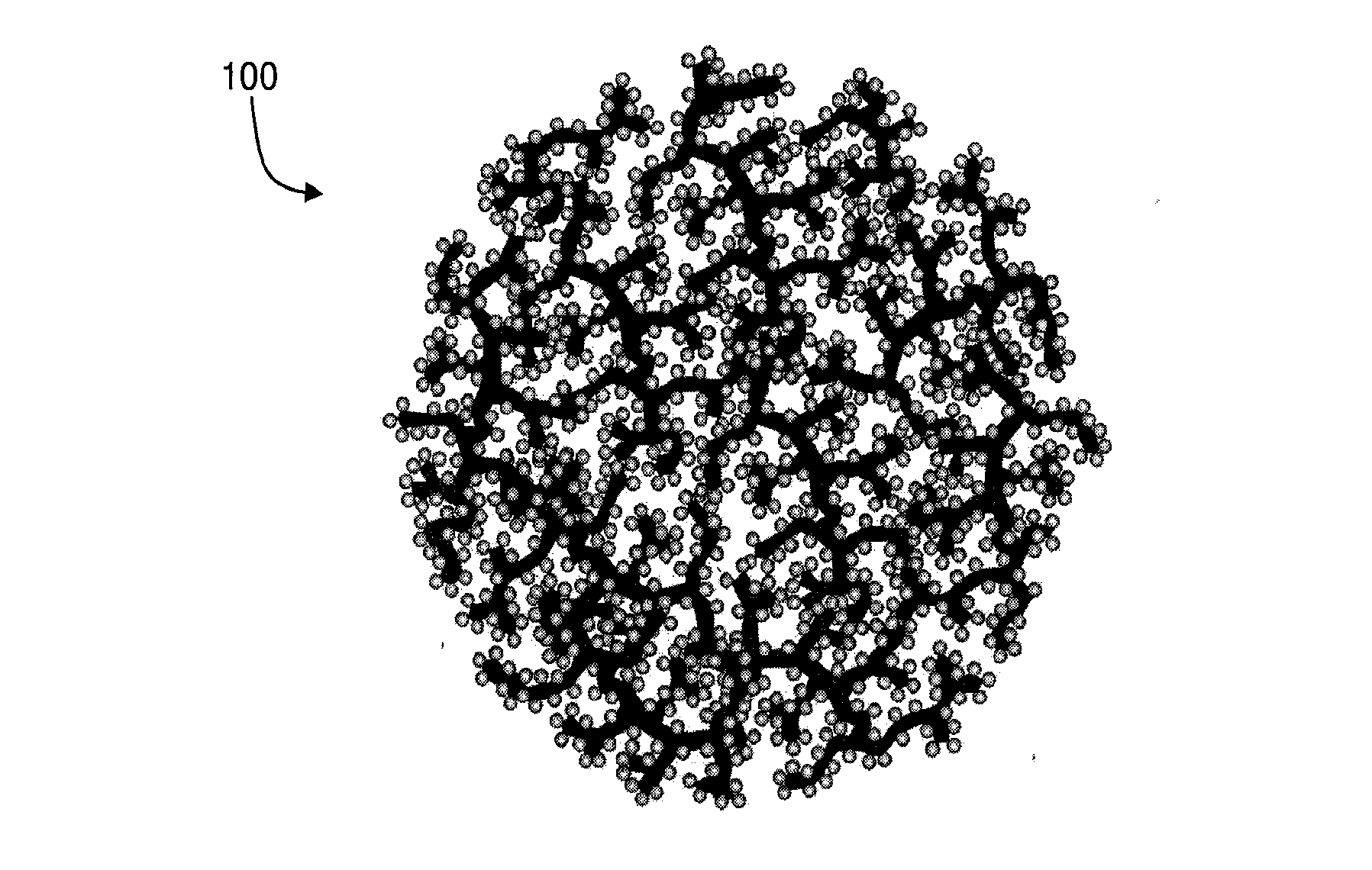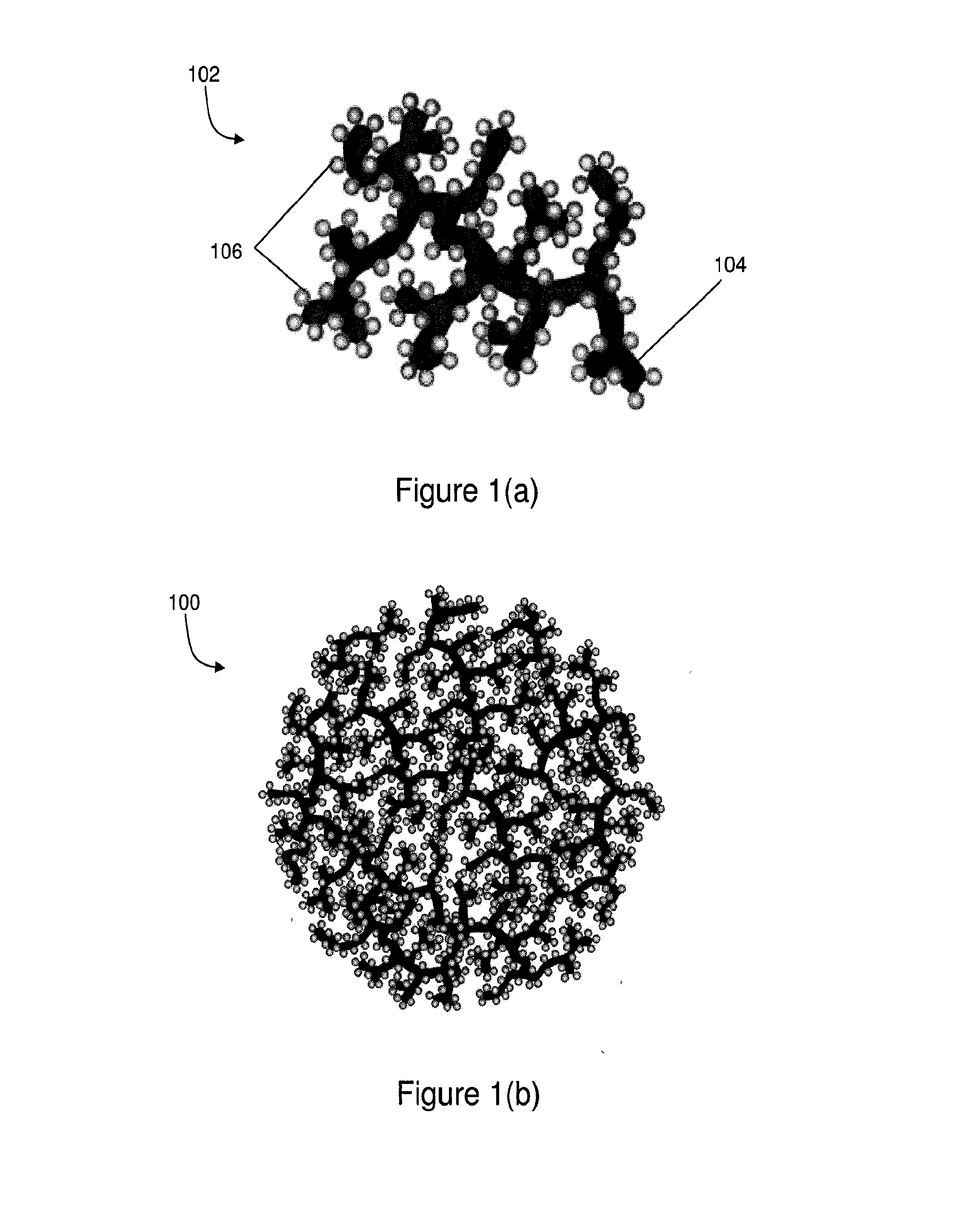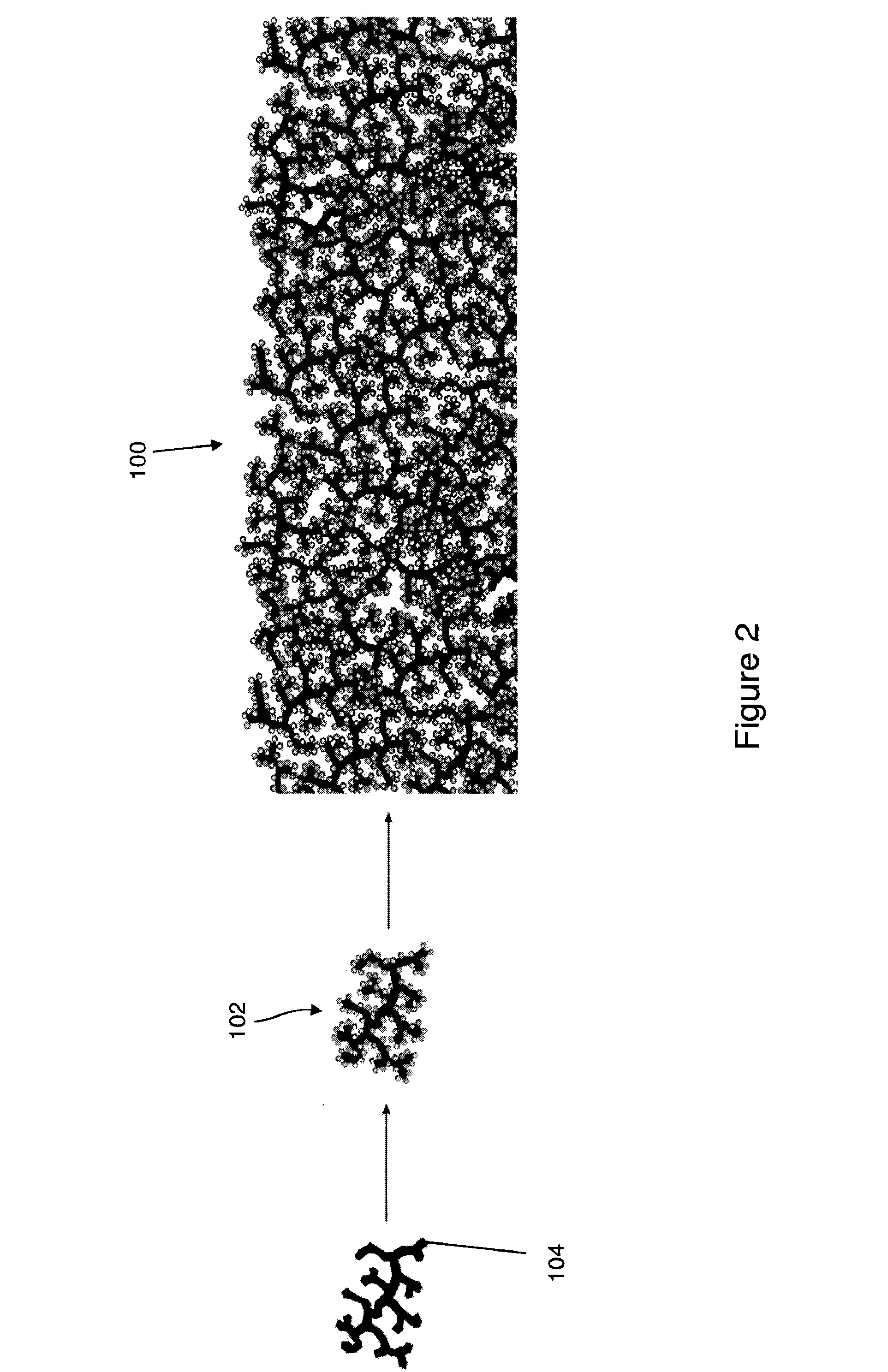Electrodes, lithium-ion batteries, and methods of making and using same
a lithium-ion battery and electrochemical technology, applied in the field of lithium-ion batteries, can solve the problems of graphite experiencing a high level of irreversibility, suffering from significant capacity loss during cycling, and silicon suffering from its own significant setbacks, so as to improve electrical communication
- Summary
- Abstract
- Description
- Claims
- Application Information
AI Technical Summary
Benefits of technology
Problems solved by technology
Method used
Image
Examples
example 1
Fabrication and Characterization of Si—C Composite Anode Material
[0082]In this example, a hierarchical “bottom-up” approach was used to form Si—C porous composite granules with high capacity, stable performance, and particle size comparable to that of milled graphite (i.e., about 15 to about 30 micrometers). This powder size is commonly used in the production of Li—ion battery electrodes and does not possess the same inhalation hazard as nanoparticles. This “bottom-up” approach allowed for the fabrication of high capacity stable composite anodes with rapid charging capability.
[0083]Briefly, a chemical vapor deposition (CVD) synthesis process has been designed for depositing Si nanoparticles on the surface of carbon black (CB) nanoparticles, wherein the CB nanoparticles form short dendritic chains during high temperature pre-annealing. The about 500 nm to about 1 μm multi-branched nanocomposite was then self-assembled into large porous spherical granules during the atmospheric pressu...
example 2
Fabrication and Characterization of Coin Cells Using Si—C Composite Anode
[0090]Coin cells (2016) with metallic Li counter electrodes were employed to evaluate the electrochemical performance of the anodes produced in EXAMPLE 1. The specific reversible deintercalation capacity of the sample with an estimated about 50 wt. % of Si reached about 1950 mAh / g at C / 20, as shown in FIG. 5(a). This gravimetric capacity was greater than about 5 times higher than that of the theoretical capacity of graphite, about 6 times that of high performance graphitic anodes, and was about 16 times that of the annealed carbon black (FIGS. 5(a), 5(b) and 7). The specific capacity of the Si nanoparticles alone was estimated to be about 3670 mAh / g at C / 20, which is the highest value ever reported for nanoparticles. It approached the theoretical capacity of Si (about 4200 mAh / g if Li22Si5 is achieved). Such high specific capacity value indicates high accessibility of the active Si for Li insertion in the desig...
PUM
| Property | Measurement | Unit |
|---|---|---|
| weight percent | aaaaa | aaaaa |
| size | aaaaa | aaaaa |
| interplanar spacing | aaaaa | aaaaa |
Abstract
Description
Claims
Application Information
 Login to View More
Login to View More - R&D
- Intellectual Property
- Life Sciences
- Materials
- Tech Scout
- Unparalleled Data Quality
- Higher Quality Content
- 60% Fewer Hallucinations
Browse by: Latest US Patents, China's latest patents, Technical Efficacy Thesaurus, Application Domain, Technology Topic, Popular Technical Reports.
© 2025 PatSnap. All rights reserved.Legal|Privacy policy|Modern Slavery Act Transparency Statement|Sitemap|About US| Contact US: help@patsnap.com



